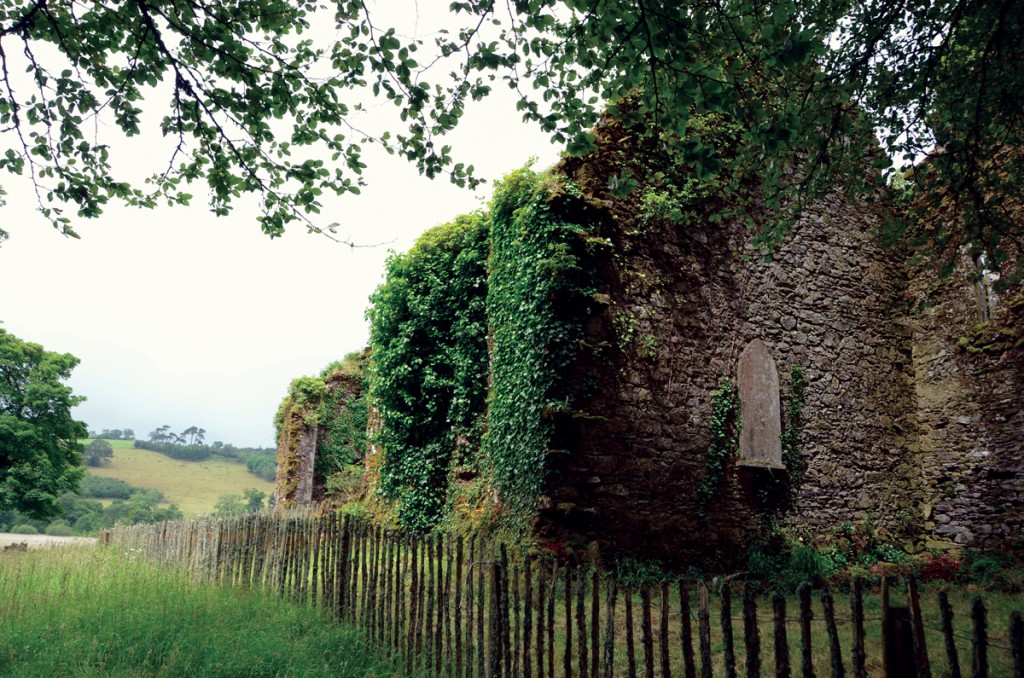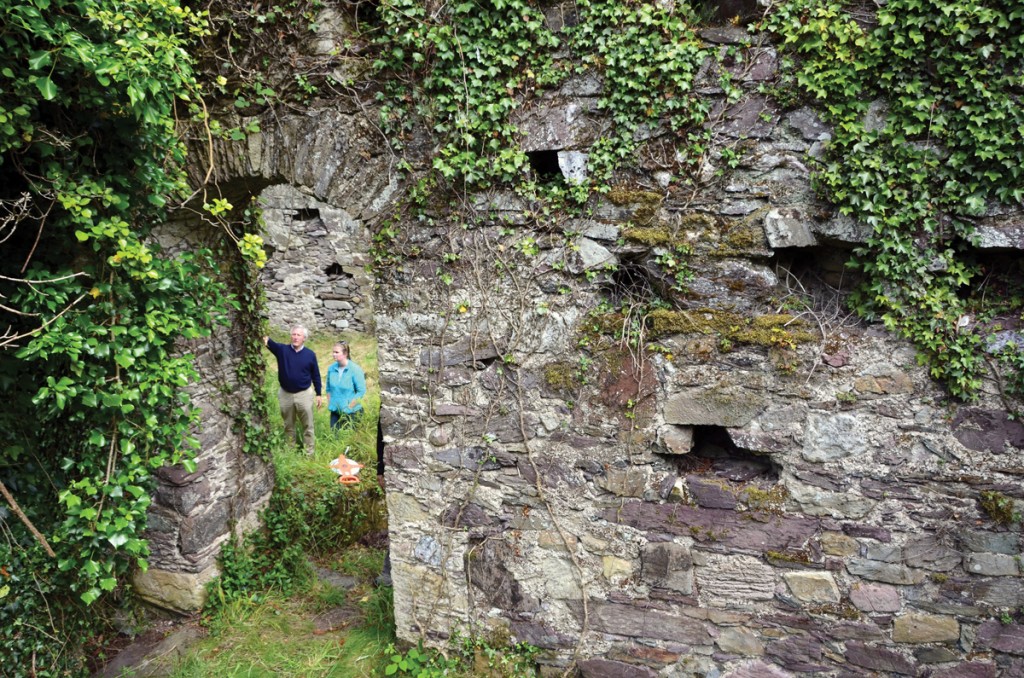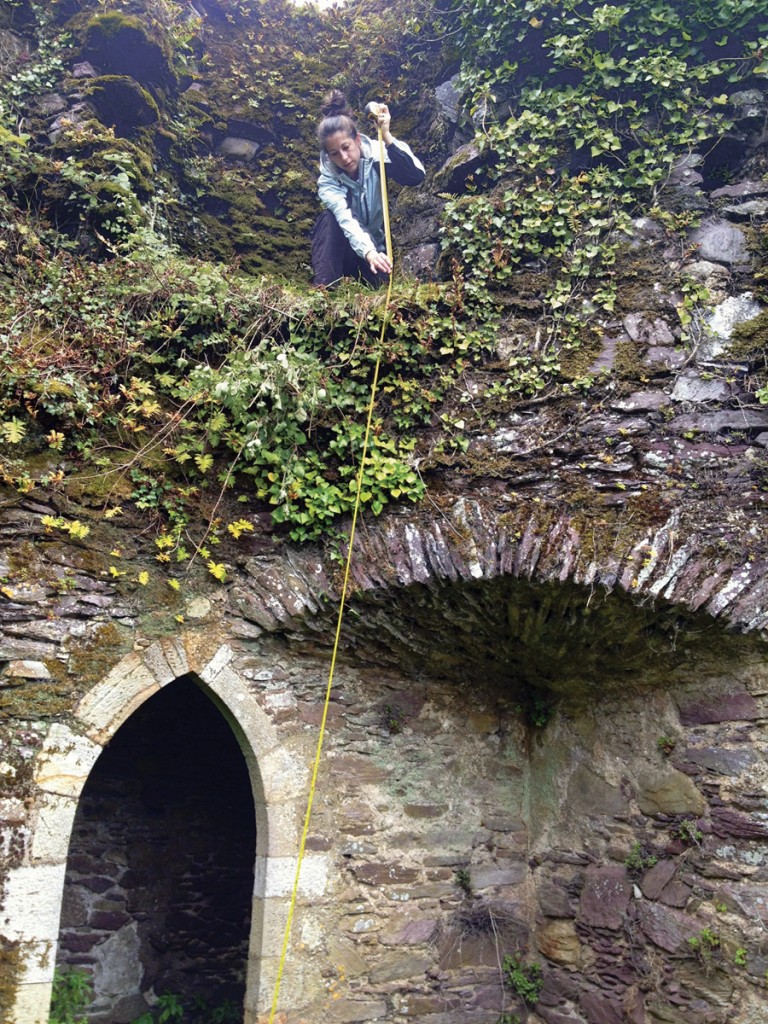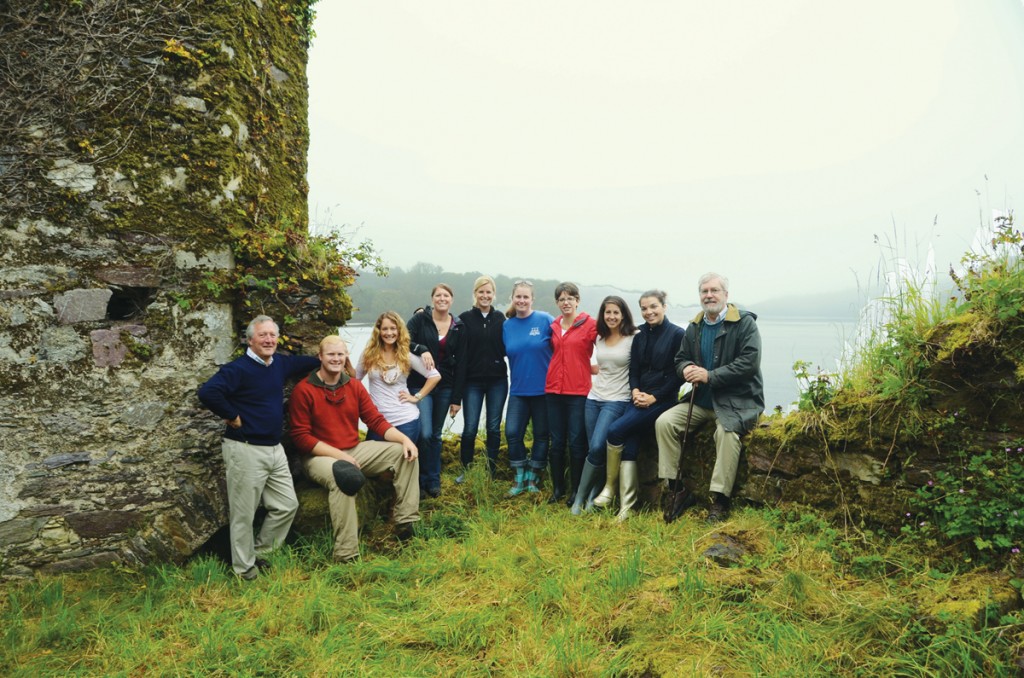Detectives at the abbey
Caroline Stec

Cloaked in green, Molana Abbey was crumbling, and Ireland was losing a witness to history. Photo by Allisyn Miller.
On what centuries ago was an island in the Blackwater River stand the ruins of thousand-year-old Molana Abbey. Roofless for centuries, its upper stone courses have tumbled to the ground, some of its arched windows have collapsed, and other sections of wall seem ready to fall. If it is to survive another thousand years, Molana Abbey, one of Ireland’s most important historic ruins, needs help.
Last summer, eight graduate students in the Clemson’s Master of Science in historic preservation program spent two weeks at the abbey, taking measurements, collecting data, and drawing sketches. With the help of their professor and program director, Carter Hudgins, they studied how the abbey has changed since its construction and how best to secure its stabilization and conservation.
Their goal was to decipher the site’s structural evolution from religious abbey to a private residence to a ruin. Founded in the sixth century, the abbey played an important role in the spread of Christianity in Ireland. Remnants of the abbey’s original buildings, all of them timber, were replaced by stone buildings. The oldest surviving portion of the abbey, the nave of its church, was built in the eleventh century. Most of what remains is a result of significant expansion during the fourteenth century.
After Henry VIII dissolved the monastic orders between 1536 and 1540, he distributed former canon lands to his allies and supporters. When Queen Elizabeth I granted extensive holdings in the Blackwater River Valley to Sir Walter Raleigh, one of her favorites, Molana and its associated lands were among them. Much of Raleigh’s fame today stems from his unsuccessful efforts to plant an English colony on Roanoke Island in what is now North Carolina. One of the leaders of Raleigh’s second Roanoke expedition in 1585, Thomas Hariot, rented “the abbey house of Molana” from him.
From his observations as a cartographer, surveyor, scientist, and linguist for the second Roanoke expedition, Hariot wrote A Brief and True Report of the New Found Land of Virginia, which shaped perceptions of the New World for centuries after its publication in 1588.
So for the Clemson team, Hariot’s brief residence at the abbey gave the project special significance, and they were careful to document the ruins, recording the current condition and deciphering the abbey’s architectural evolution. The students’ research revealed how changes in ownership affected the landscape and the abbey’s form and use from the eleventh century to the nineteenth, when new owners transformed the ruins into an ornamental garden folly.
For Hudgins and his students, summer research in Ireland offered a rare chance to trace structural alterations made at a site over a millennium. “It was pretty crazy to work on a building with four building phases that spanned centuries,” says Mary Margaret Schley, a student in the program.
Using a total station, an electronic surveying instrument, and hand measurements, the students prepared documentation drawings of the site and its buildings, techniques they learn during their first year in the program. With that information, the students will formulate a plan they will present to the owner of Balllynatray Estate, the property that contains the abbey, and to authorities responsible for ancient monuments in Ireland. “Putting on detective lenses and picking out which stones look different or out of place is not always easy, but when you find a clue, like elements of a former door or window arch, it’s a thrill,” says student Neale Nickels.
“It was difficult at first to wrap your mind around drawing and measuring crumbling facades and interiors,” Schley says. “We quickly realized that our traditional technique of segmenting the structure and dividing into teams would be the best way to handle the documentation.” The group worked with an American archaeologist who has studied medieval sites in County Cork for three decades as well as Irish archeologists.
While the students concentrated on their drawings and observations, Hudgins, along with program coordinator Allisyn Miller, completed a photographic survey of the abbey. Later, using AutoCAD software, they created perspective-corrected photo mosaics of the ruin. “It was a challenge working with materials—stone architecture—we don’t see in Charleston at all,” Hudgins says.The Clemson team will recommend that sections of the abbey be reconstructed, Hudgins says. They will also recommend removal of the ivy that covers much of the structure as well as shrubby plants and small trees growing out of the ruins. “The amount of ivy growing on practically every surface became problematic when measuring and photographing, but we had to be careful to not remove anything for fear that we would harm the building underneath,” says student Liz Shaw.
When not working on the abbey, the group visited Irish towns and archaeological sites—among them Tintern Abbey, Mahon Waterfalls, Blarney Castle, and Kinsale—that helped place Molana in the broad sweep of Irish history. “The landscape was even more breathtaking than I had anticipated and local residents were so welcoming and sincerely interested in what our project involved,” Shaw says.
The students say they left Ireland not only with a greater appreciation for historic preservation but of Irish culture and history, and even its weather.
%%wppa%%
%%slide=5%%
%%size=750%%
Carter L. Hudgins is director of the graduate program in historic preservation. Caroline Stec is a senior majoring in English and publication studies with a minor in political science.





